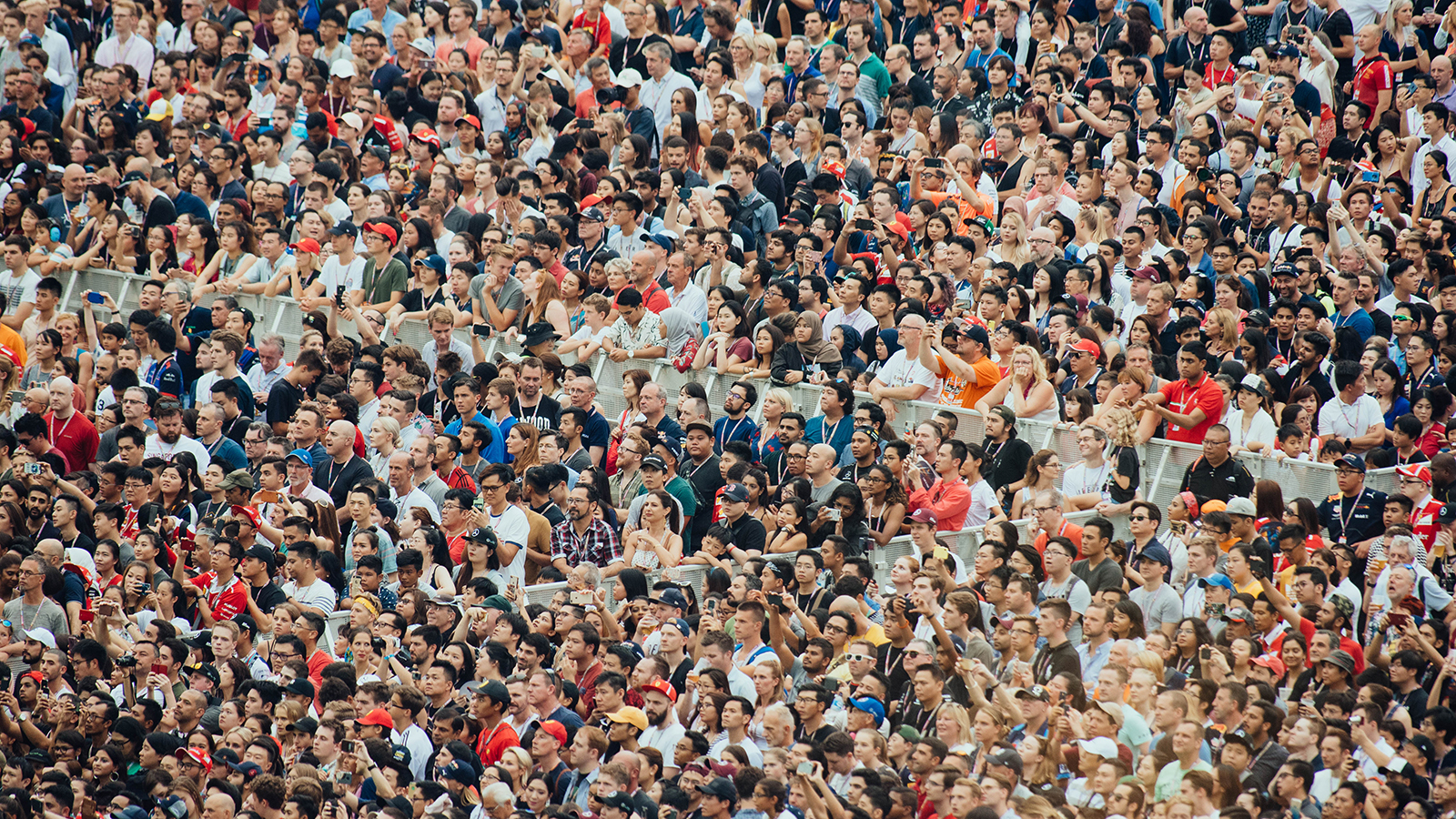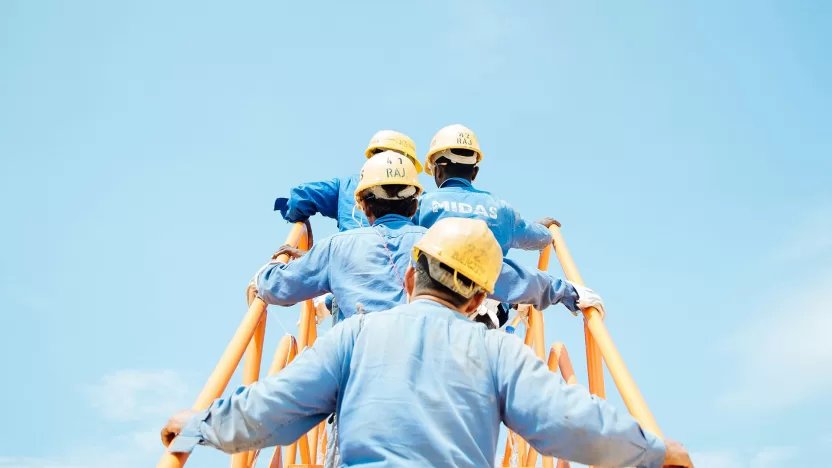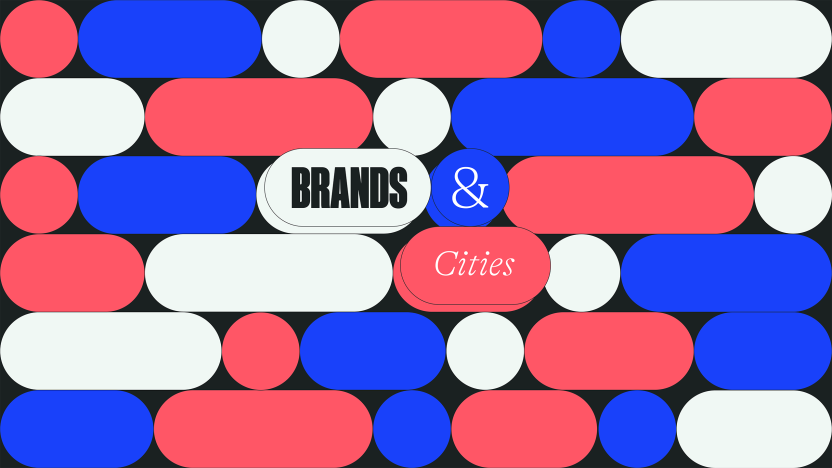(Human) trends
Collecting bigger/better/faster data allows businesses to uncover previously inaccessible insights about customers’ behaviors.
by Valentina Lunardi

Designing, building, and launching successful experiences, products, or services is ultimately about answering one simple question: What are your users going to want next?
Whether you’re an entrepreneur, a business leader, a marketer, or a designer makes no difference: in our constantly evolving digital era, the deep purpose of your work is somehow connected to this question every day. The problem? The established way to answer it relies on creating something relevant for the present, a temporal space that has, however, become mutable, fluid, transformative.
Let’s try to explore some established approaches to get closer to the user and understand their desires, needs, and points of view. One usual approach to collect information focuses on getting ever closer to users (or potential ones): spending time with them, creating super detailed personas, drilling down into their unique socio-cultural context, creating a deep observation process that reveals what they want. It’s undeniable that this kind of ethnographic fieldwork can generate deep insights. But obtaining these insights is arduous, not to mention the fact that they are time-consuming and expensive.
An alternative approach is to simply ask people what they’d like — which is what we can refer to as traditional market research. But it is quite well known that there is often a huge gap between what people say and how they behave and imagine. Furthermore, open questioning often strives to capture newly emerging expectations and points of tension which people might not even recognize. And the search for these implicit and not yet rationalized tensions are the ones that ignite creative thinking and experimentation.
This kind of thinking was at the basis of the process of creation for Steve Jobs:
“Our job is to figure out what they’re going to want before they do … People don’t know what they want until you show it to them. That’s why I never rely on market research. Our task is to read things that are not yet on the page.”
An approach that some time ago could have been undertaken to excel as a business, today, is a strategic trajectory for more or less technological or innovation-oriented companies. To put it bluntly, imagining what the future of mobility will look like has become a common activity for both Tesla and BMW.
There’s another approach connected to our tech-driven era which has gained great success: that is, analyzing what people actually do. The last decade has seen vast amounts of attention and investment flows to quantitative data-driven solutions. The aim is clear: collecting bigger/better/faster data allows businesses to uncover previously invisible or inaccessible insights about customers’ behaviors.
Let’s be clear. Data is indeed incredibly valuable and it would be absurd to suggest otherwise. But often data-driven innovation (or more practically, solutions) is incremental in nature. Data is phenomenal at validation and optimization, but less strong at generating those radical and unconventional intuitions that characterize many truly novel and disruptive experiences, products, or services.
How is it possible to detect what our users are going to want next?
The recipe to answer this question is to combine the methods we have described above by adding another ingredient to the mix, a process finalized to make sense of the existing context and to capture those weak and implicit signals of change that are forging new scenarios of opportunities. In other words, we are about to talk about trends!
Speaking about ‘trends’ often confuses people — are we talking about fashion? New technologies? what’s #trending?. The word trend is also often used in the same way as descriptions of fads and hype, but there is a difference. A HUGE one. A fad or a craze is created by advertisers or media to promote a specific idea and consists of a form of collective behavior, which develops within a social group and is followed enthusiastically for a limited period. On the other side, the aim of trend research is based around a counterintuitive concept: in a business arena characterized by relentless change and hyper-competition, in order to anticipate what people will want next, the key is to stop asking what people want and start observing and analyzing signs of transformation in a broader context.
Specifically look at the brands, startups, or innovations that are setting people’s expectations around what is possible, desirable, or simply ‘normal’ and use these — and the signs of transformation you can draw from them — to anticipate what your users will want next.
This innovation-led approach generates compelling new answers to the ultimate business question by tapping into a new perspective to start a design process equipped to generate future-proof solutions.
At this point, you may ask what is the connection between trends related to people’s needs and expectations and the evolution of design. The connection lies in the fact that design disciplines have crossed their paths with the vast horizon of new business practices oriented to redefine industries in our constantly evolving digital era. Design means often not only to create products, services, or experiences but to draw new organizational structures, methods of work, strategies, and business models.
Areas where people as “users” are at the center of the design, which becomes a process not focused on pure innovation but human-centricity.
In the same way we can look at inside phenomena research — in the past the focus was to identify innovations and trends, while now it is about converting those trends into practical, relevant, and human-centric solutions. All this requires better and more efficient approaches to interrogating data, identifying opportunities, harnessing influence, and boot-camping innovation in short and easy-to-activate stages.
As designers of human-centric innovations, we have developed a set of tools, formats, and strategies that help companies confront changes and define a new project approach to tackle strategic challenges. A process that starts for us in making sense of the present and leveraging heterogeneous capabilities to seize observation, intuition, and hard and soft data in future planning and strategy.
The experimentation of this design perspective has led us after several experiments to create a real tool dedicated to continuous exploration: maize.INSIGHTS is our think tank and its aim is to deliver organizations with relevant analysis to bolster the development of both strategic and actionable thoughts, leveraging on a unique perspective that it is built upon: privileged access to innovation topics, an ongoing dialogue with organizations from different industries, the agility of a startup within a complex reality.
All this allows us to know, quickly and nimbly, how other players in the market are innovatively addressing humans’ deepest expectations and needs with new technologies and solutions. We are therefore committed to looking for customer-facing innovations that are (re)defining what people will want and even start to expect.
Our entire society is based on people, therefore when it comes to analyzing the present to imagine the future, we always start from human understanding. Our think tank identifies and decodes humans’ patterns, inside four big lenses: technological, economic, social, and behavioral.
The landscape analysis
The first step to begin our journey is to orient ourselves, to understand the context in which we are immersing ourselves. The landscape analysis is a photograph of the current context, fundamental to create an analytical basis to understand the actual scenario, the offer, the organizational structure, and contextualize the space of action in which the spectrum of analysis moves.
This activity is focused on different areas, such as business and technological solutions and involves:
–mapping of the most interesting players active in the reference industry
– gathering of best practices
-collecting and reinterpreting the market and consumer data and facts
The key rule in this phase is to be curious and be open-minded. You have to ask yourself ‘why’ whenever you notice something new, instead of immediately looking for shortcomings. Also, realize that you are not necessarily your user: your professional interests should be broader than your personal interests. You may not be excited by something new, but others are. Ask yourself why they are excited, take notes, and create a picture of the developing context.
The Why: drivers of change
To build scenarios and spots for innovation, reading what’s contemporary is not enough: it is necessary to build a point of view and an analysis of the impact of phenomena and trajectories of change that are already in action in the market or within organizations.
What we are looking for are phenomena that are already popular, present in the language, codified, that we analyze and explain to find those weaker signs of change that suggest future evolutions. It is only by studying the weak that we understand how strong a change may become.
By ‘weak,’ we mean faint voices or shifts in the culture that suggest a new movement is on the rise. A weak signal can be a peer-to-peer platform that creates direct retail models between consumers, a non-alcoholic beverage company that reinvents happy hour, or supply chain solutions that offer new ways to save on materials when shipping packaged goods.
The case research
Let’s clarify another concept: innovations are not trends. But without actual examples of how players are applying new solutions to tackle human needs, behaviors, and expectations, a trend can’t be said to exist fully yet. Because of that, our research projects always include the spotting of case studies, which should support a vision, new business concepts, products, services or experiences, show marketing, and communication activities.
The scouting activity may include different objects that are interesting for a specific brief that includes a request that concerns a fairly defined area (e.g. what are other companies doing with VR? How are retail brands reacting to the surge of e-commerce?).
Human trends and how to build them
Trends are observable and evolving collective phenomena, which have a socio-economic, cultural, technological, and organizational impact and emerge from changes in people’s needs, expectations, and imaginations. To build a trend, it is necessary to interpret signals coming from different sources, sectors, and markets, which are not always already consolidated; trends are analyses that are the result of original and always human-centric thinking. They can describe both contemporaneity and more distant scenarios.
Are trends the secret weapon for designing a product with a certain success factor?
If that was the case, we would not necessarily need trend-researchers. A trend outcome could be contemporary and growing, but the most interesting trends are about undiscovered opportunities.Some trends are developing photographs of future developments, but for this very reason, they are the most interesting for their ability to focus on still blurred opportunities. Showing us which direction people’s expectations and imaginations are headed to.
Trends are not an intellectual exercise. They are a lens to discover what the future may hold and the engine to accelerate change and imagination. We use trends to understand and intercept people’s needs/expectations and outline strategies based on human centricity; to rethink intervention actions on one’s organizational structure, way of working, culture from an employee-centric perspective; to build human-centric products and services, finally long-lasting, valuable and relevant for people.


